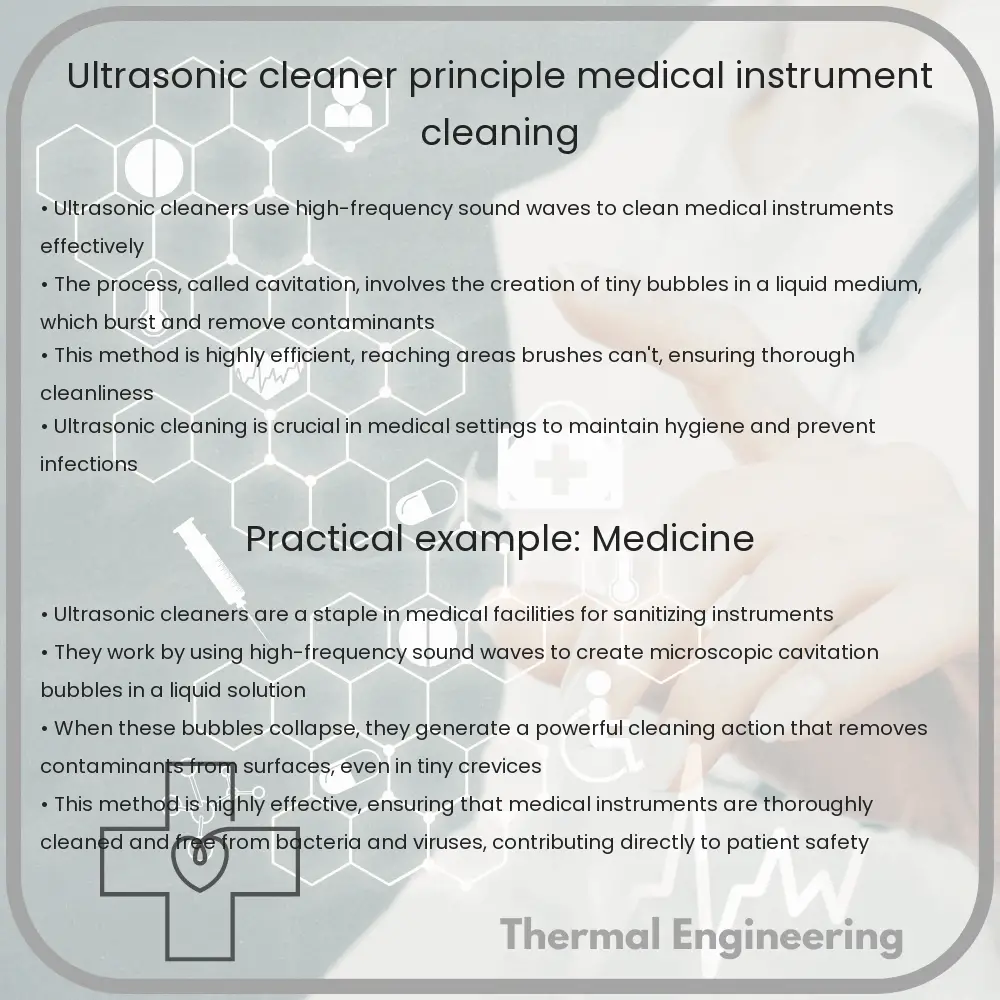Learn about ultrasonic cleaners, devices harnessing ultrasound technology to clean sensitive items like medical instruments.

Introduction to Ultrasonic Cleaners
Ultrasonic cleaners are a type of cleaning device that uses ultrasound technology and an appropriate cleaning solvent to clean delicate items. They are particularly effective for cleaning intricate, small, or sensitive items such as medical instruments, jewelry, glasses, and electronic components.
Principle of Operation
The fundamental principle behind ultrasonic cleaning is the use of ultrasonic waves, typically frequencies ranging from 20 kHz to 400 kHz. These high-frequency sound waves create a phenomenon known as cavitation in the cleaning solution. Cavitation occurs when ultrasonic waves travel through the liquid, creating microscopic bubbles that rapidly collapse or ‘implode’ upon themselves. This implosion produces intense shock waves within the liquid, which dislodge contaminants from the surface of the item being cleaned.
Key Components of an Ultrasonic Cleaner
- Ultrasonic Generator: Converts electrical energy into high frequency acoustic energy.
- Transducer: Attached to the cleaning tank, the transducer receives acoustic energy from the generator and converts it into ultrasonic waves in the cleaning fluid.
- Cleaning Tank: Holds the fluid and submerged items. It is designed to withstand the energy produced by the cavitation process.
- Cleaning Solution: Depending on the type of contamination and the items being cleaned, different solutions may be used. They can range from water-based detergents to more specialized solvents.
Medical Instrument Cleaning
Cleaning medical instruments is one of the most critical applications of ultrasonic cleaners. These instruments must be free of organic matter and pathogens to ensure they are safe for reuse. Ultrasonic cleaning effectively removes blood, tissue particles, and other contaminants that can be hard to eliminate with manual scrubbing. This process not only achieves a high level of cleanliness but also does it faster and with less physical effort than traditional cleaning methods.
Benefits of Using Ultrasonic Cleaners for Medical Instruments
- Efficiency: Cleans thoroughly and quickly, reaching areas that would be inaccessible or difficult to clean manually.
- Safety: Reduces the risk of cross-contamination and improves overall hygiene by providing a consistent cleaning outcome.
- Sustainability: Typically uses less water and chemicals than conventional cleaning methods.
- Gentle on Instruments: Despite its powerful cleaning action, ultrasonic cleaning is gentle enough to protect delicate instruments and increase their lifespan.
Conclusion
Ultrasonic cleaners are indispensable in environments that demand high cleanliness and hygiene standards, particularly in the medical field. The use of ultrasonic technology not only ensures thorough cleansing of complex and sensitive instruments, but it also offers an efficient, safe, and environmentally friendly cleaning solution.